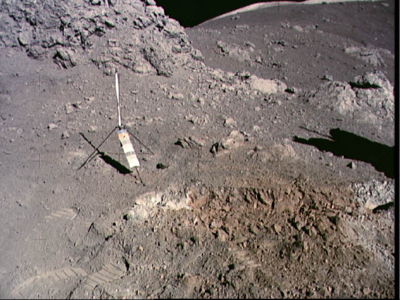Difference between revisions of "Ore Bodies"
m (Reverted edits by 195.78.209.34 (talk) to last revision by 204.110.115.51) |
|||
| Line 19: | Line 19: | ||
Super jzzaed about getting that know-how. | Super jzzaed about getting that know-how. | ||
| − | + | Your article peferctly shows what I needed to know, thanks! | |
| − | |||
| − | |||
| − | |||
| − | |||
| − | |||
| − | |||
| − | |||
| − | |||
| − | |||
| − | |||
| − | |||
==Ore Concentration== | ==Ore Concentration== | ||
Revision as of 20:34, 29 October 2011

It is requested that a fork of this article be installed to Scientifiction.org.
What Ore Bodies can be found on the Moon?
For a mineral to be recoverable at a reasonable cost it must be found in large enough quantities and concentrated enough that commercial extraction is profitable. Such a concentration is an ore body.
Where is Ore
Ore bodies are rare. If the concentration is poor, then you will have to process too large an amount of rock to be attractive. If the quantity in a specific location is not large, then it is simply not worth expending the capital setting up an industrial operation. If the location is poor, then the cost to dig the ore out and for transportation out will be prohibitively expensive.
It is far more common to have a mineral dispersed over a large area in too low a concentration to be commercially exploited than to have a viable ore body. These dispersions are very common on the Moon. Such mineral distributions are much easier to spot from space than real ore bodies, but they are of little use to space settlers. Real ore bodies are best investigated by a geologist on the surface, human and robotic.
Super jzzaed about getting that know-how.
Your article peferctly shows what I needed to know, thanks!
Ore Concentration
One attractive possibility is to concentrate the valuable lunar materials into a form that has true economic value. This is a common practice through out the American West today and can be done quite economically on a small scale.
The process usually starts with grinding the ore into a very fine power with ball mill. On the Moon we have a decisive advantage in that the regolith material is already ground to a consistence of at least course sand.
The ore is then mixed in water to form a slurry. This process requires mechanical mixing and often the injection of air. Chemicals are then added to the mix that either move the desired materials into solution or cause them to form a froth of bubbles on top of the solution.
The desired minerals are then separated and the chemicals neutralized. The water is then removed and the dry ore concentrate placed in drums. The drums are impressively heavy.
This process generates concerns for adaptation to our lunar situation both because of the large amount of water required and that some of the chemicals, such as cyanide, are toxic. Still the process is regular done by small operations with economic success and environmental safeguards at remote locations on Earth and in very dry country.
It would be a very rare ore concentrate that would be worth the cost of shipping back to Earth. Even considering this it is much cheaper to ship mass from the Moon to the Earth than vice-versa. This process is much more believable for material to be used on the Moon, in Earth orbit, or for trips farther out.
Good point. I hadn't thuohgt about it quite that way. :)
Polar Deposits
It is highly likely that hydrogen and its compounds are concentrated in dark craters at the Lunar poles. There are more than a hundred square kilometers of polar crater bottom that has not seen the light of the sun in a billion years. The small amounts of volatile compounds released in comet strikes on the Moon should have accumulated in these areas over geologic time. In our stories these areas are called "the cold and the dark".
We do not currently know the extent or the physical form of these deposits. Finding this information will be one of the first goals of our new lunar explorations.
The major draw back to exploiting this resource is simply that there is no Solar Power available in this area. It is not clear how we will mine these regions.






